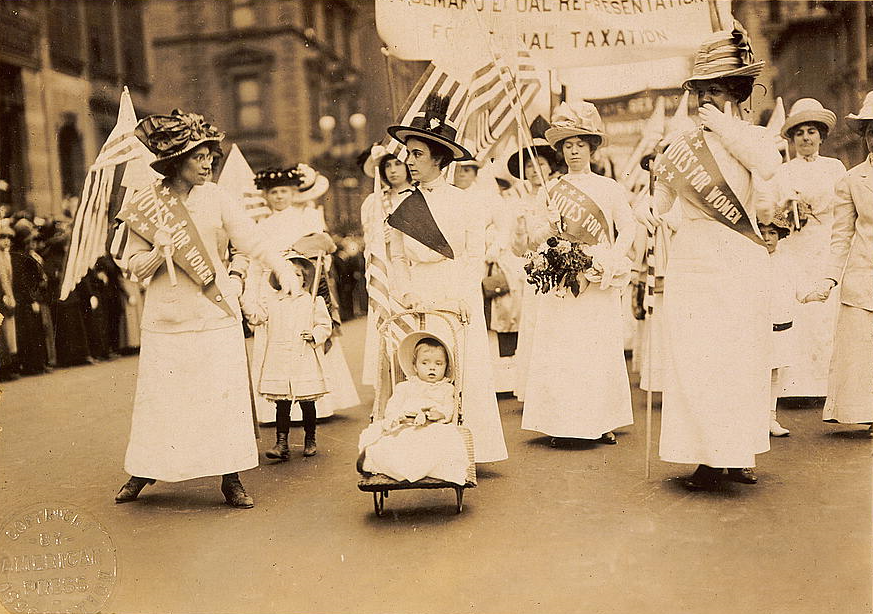Every year on March 8th, we celebrate International Women’s Day. In European culture, this day is observed on March 8th, while in Tunisia, it is celebrated on August 13th.
Legends trace the origins of Women’s Day back to ancient Rome, where it was a tribute to the goddess Juno, the protector of women’s lives. Women prayed for happiness in their marital lives, and husbands gifted their wives on this day. There are accounts linking the celebration of women to Roman Matronalia, a festival honouring motherhood, fertility, and the female element in nature. Women were treated exceptionally during these celebrations, receiving gifts and fulfilling their wishes.
Originally, International Women’s Day aimed to honour suffragettes who fought for women’s rights, equal treatment at work, and equal pay for equal work.
The Beginnings
The beginnings of International Women’s Day stem from labour movements in North America and Europe. The holiday is commonly traced back to 1857 when women working in a cotton factory organised a strike, demanding shorter workdays and equal pay to men.
The earliest observances of Women’s Day, now National Women’s Day, occurred on February 28, 1909, in New York. Organised by the Socialist Party of America, it was suggested by suffragette Theresa Malkiel. Initially, it was claimed that the day commemorated a protest by women working in the garment industry in New York on March 8, 1857. However, experts consider this a myth intended to separate International Women’s Day from its socialist origins.
In 1910, the International Socialist Women’s Conference in Copenhagen established International Women’s Day to promote women’s rights and build social support for universal women’s suffrage.
On March 19, 1911, International Women’s Day was celebrated for the first time in Austria, Denmark, Germany, and Switzerland. Demands included women’s voting rights and access to public positions, women’s rights to work and vocational training, and an end to workplace discrimination.

Suffragette demonstration in New York, May 6, 1912.
Image source and information: American Press Association, copyright claimant – Library of Congress Catalog: https://lccn.loc.gov/97500068 Image download: https://cdn.loc.gov/service/pnp/cph/3g00000/3g05000/3g05500/3g05585v.jpg Original url: https://www.loc.gov/pictures/item/97500068/
March 8th designed as International Women’s Day
The United Nations Charter, signed in 1945, was the first international document confirming the principle of equality between women and men. Over many decades, the UN has been involved in developing international strategies, standards, programs, and goals to promote the advancement of women’s status.
In 1975, the United Nations designated March 8th as International Women’s Day during the International Women’s Year. Two years later, the General Assembly adopted a resolution, expanding the celebration to a United Nations Day for Women’s Rights and International Peace, to be observed according to each nation’s traditions.
Unfortunately, International Women’s Day has been the cause of violence in Tehran. On March 4, 2007, Iranian police beat up a hundred people planning a gathering. Many women were arrested. Some of them reported days later that they were confined and interrogated.
There is still much to be done worldwide regarding women’s rights. Then, UN agencies worked towards global gender equality, achieving significant milestones such as the 1995 Beijing Declaration and Platform for Action and the integration of Goal 5 into the 2030 Agenda for Sustainable Development.
Did you know?
- New Zealand was the first self-governing nation to allow women to vote.
- In Armenia, after the fall of the Soviet Union, the celebration of International Women’s Day was discontinued. Instead, on April 7, the holiday of Beauty and Motherhood was introduced. The new holiday became popular among Armenians and is observed as a commemoration of one of the main holidays of the Armenian Church, the Annunciation. However, people also celebrate on March 8. The public discussion regarding the two Women’s Days resulted in Women’s Month, which lasts between March 8 and April 7.
- Germany starting from 2019, International Women’s Day has been a public holiday in Berlin; since 2023, also in Mecklenburg-Vorpommern.
- In Portugal, on the night of March 8, groups of women often celebrate with dinners and parties “for ladies only.”
- The most common gifts in Russia are silver acacias and chocolate.
- In Romania, this day is equivalent to Mother’s Day, during which children give small gifts to their mothers and grandmothers. On the night of March 8, groups of women often celebrate with dinners and parties “for ladies only.”
- In Tunisia, Women’s Day is celebrated on August 13.
- In Italy, women are given branches of silver acacia.
The United Nations has designated the year 2024’s theme as ‘Invest in Women: Accelerate Progress,’ with a focus on addressing economic disempowerment. The campaign theme for this year is ‘Inspire Inclusion.’
Source: Wikipedia, United Nations website



